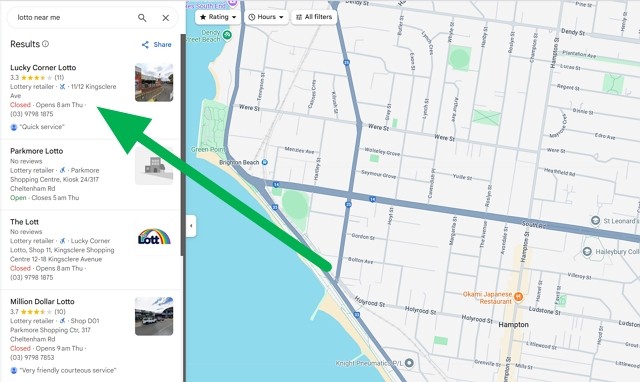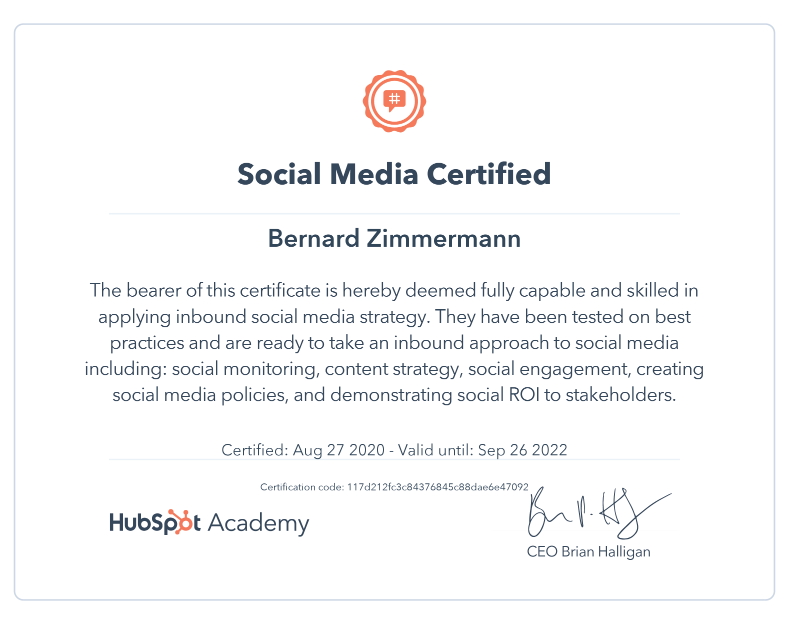
This is a typical map that customers call daily to search locally for goods and services they use. See the green arrow, which they look at in the Google suggested listings of the businesses they are looking for now. I have spoken about this before and must talk about it again, as in 2025, local search in Google has become a cornerstone for businesses. Today, there is a dramatic rise in "near me" searches, and now nearly half of all Google searches have local intent, which has grown by 500% in recent years. It translates directly to sales, as 76% of local searchers visit that business within 24 hours, and 28% of those searches result in a purchase often in an hour. I suggest you go through the complete list of the items on this website I linked to.
Many more people are now searching for local shops on Google. Google Maps Marketing is crucial for enhancing your visibility and customer engagement.
Why Local Search Matters
For example, if a customer searches for "lotto near me," they want a lotto agency near them; almost certainly, this is a potential customer looking to buy. Today, this local search is pivotal in driving foot traffic and sales to shops. We want to target customers with high purchase intent, as 28% of these local searches result in a purchase, often within an hour.
Local search is critical for SMB businesses. You, David, can compete with the Goliaths.
How Google Maps Marketing Works
Google Maps Marketing involves promoting your name in local search results. It requires you to claim your Google Business Profile, ensure consistent business information across the web, and encourage positive reviews to improve your visibility and attract customers.
Setting up your Google Business Profile is the first step in Google Maps Marketing. Make sure your profile is fully completed and is correct. Please ensure you have accurate and up-to-date information. Put in your business name, address, phone number, and hours of operation. It's also important to categorise your business correctly and include relevant services in your business title. The ones you need to categorise are the ones that people are searching for you.
Ready to improve your local visibility? Let us proceed.
Understanding Google Maps Ranking Factors
Let us examine the key factors that influence rankings and why you can, as David, compete with the Goliaths out there.
Firstly, Google Maps is what we call a zero-sum game. That means there are limited spots, and if you are in, someone else is out. So, we need to push the factors that get us in so we get the place.
Now, the three primary factors that determine your spot in Google Maps are:
Relevance
Relevance in Google Maps rankings refers to how well your business matches the customer's request. If I am a potential customer looking for, in this case, lotto, you have lotto. You must ensure that your Google Business Profile lists you with lotto.
To enhance relevance, businesses should focus on the following strategies:
Correct Categorisation
Ensure your business is listed under the most accurate category. Google provides a list of categories that you can choose from when setting up your Google Business Profile.
Keyword Optimisation
Include relevant keywords of your business in your description.
Distance
This one is difficult as there is little you can do about the distance between you and the customer. Distance plays a crucial role in Google Maps positions. The fact is that businesses closer to the search location are more likely to appear in search results. However, distance is balanced with relevance and prominence to show the most relevant results.
Prominence
Prominence is determined by your business's online reputation and offline credibility. It includes positive reviews, high ratings, and mentions online. Being active online does help.
Basic Optimisation Steps
Introduction to Optimisation
Optimising your Google Maps presence is crucial for improving visibility and attracting more local customers. The process involves several key steps that help ensure your business appears prominently in search results. These basic optimisation steps can enhance your online presence and drive more foot traffic to your business.
Claiming your Google Business Profile
Claiming your Google Business Profile is the first step in Google Maps optimisation.
Steps to Claim Your Google Business Profile:
- Verification Process: Verify your business through Google My Business. This typically involves receiving a phone call from Google. From experience with many of my customers, it is not easy. It often needs to be done a few times until it happens.
- Complete Profile Information: Ensure your profile includes accurate business information. Double-check your name, address, phone number, and hours of operation.
- Business Categories: Choose the most relevant categories to improve your business's relevance in search results.
- High-Quality Photos: Take high-quality photos of your business with your smartphone to enhance visibility and engagement.
- Description and Keywords: Write a compelling business description with relevant keywords to improve your profile's visibility.
It will take you a few hours of work, but it's worth it.
- Encouraging Reviews: Encouraging people to review you is critical. Positive reviews improve your visibility in search results and build trust with potential customers. Ask customers to give you some reviews. Do not worry about negative reviews. We all get them. If you are in business, you need to have a thick skin. It goes with the territory.
Need help implementing these changes? Give me a call.

Monitoring and Improving Rankings
Monitoring your local search rankings is essential to understanding how well your business is performing in Google Maps and identifying any needed improvements. While there are tools advertised to provide insights, asking your customers is the most effective way to gauge your progress.
Asking Your Customers
Asking your customers how they found your business is a straightforward, simple and robust method for understanding your local search performance. This approach allows you to gather firsthand information about your visibility. Ask them what they are looking for, what they used and why they picked you.
This way, you will get:
Direct Feedback
Customers can provide direct feedback on how they discovered your business, helping you understand which marketing efforts are most effective.
Personal Connection
Engaging with customers builds trust and strengthens your relationship.
Insights into Search Behavior
Understanding how customers search for businesses like yours can help you better meet their needs.
Questions to Ask:
What Did You Search For?
Ask customers what keywords or phrases they used in Google Maps to find your business. It helps you understand which search terms are most effective for your business.
How Did You Find Us?
Please inquire about the steps they took to find your business.
For example, you might ask a customer: "What did you type into Google Maps to find our lotto shop?"
Do tests
Go to the parking lot near your shop. Now, search Google Maps for your business's services, such as "lotto near me."
What happens, what appears?
Do the same test in another part of your shopping centre, and try again.
Continuous Improvement
Once you get some answers, change your listing till you get it right.
Conclusion
Understanding Google Maps can help you leverage this technology to attract more customers in 2025.
Frequently Asked Questions (FAQ)
Q: What is Google Maps Marketing? A: Google Maps Marketing involves making your online presence appear prominently in local search results in Google Maps.
Q: Why is Google Maps important for local businesses?
A: Google Maps is crucial for local businesses as customers will use it in 2025. It drives foot traffic and sales and provides a platform for businesses to compete locally. Most importantly, it reaches customers with high purchase intent.
Q: How do I optimise my Google Business Profile?
A: Fill it out; not just 60% of many do. Ensure it is complete with accurate information and has the relevant keywords.
Q: How often should I update my Google Business Profile?
A: Until you bed it down, probably every month, and after that, once every three months just to check it out.
Q: What are the costs associated with Google Maps Marketing?
A: Everything I have said here is free. We can discuss later the paid stuff.
Q: How long does it take to see results from Google Maps? A: Generally, businesses notice improvements within a few weeks.


